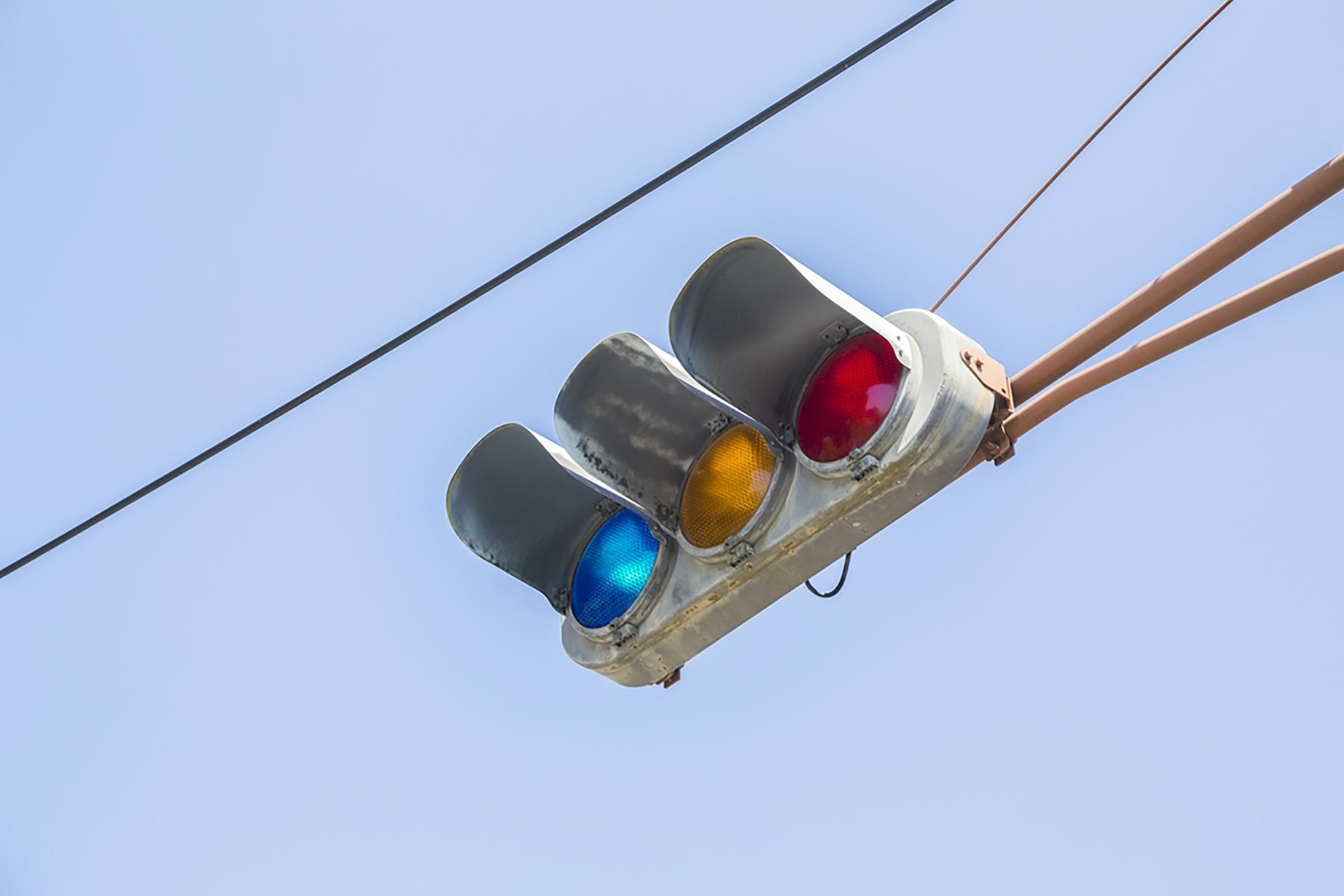This is what happens when you have one word for two colors.

If You See a Traffic Light With Blue Instead of Green, This is What It Means

It’s a lesson most of us learn long before we’re old enough to see over the dashboard: Red means stop, green means go. Simple enough. But what happens when you live in a culture where green also means blue? (Before we answer that, here’s why our own traffic light colors are red, yellow, and green.)
“While most countries use the standard green, yellow and red color system, Japan uses a bluish hue for green,” says attorney Angel Reyes.
Drive around Japan long enough and you’ll probably run into one of the country’s mythical blue traffic lights, which looks like this. Elsewhere around the island you’ll find “go” signals that are decidedly teal, turquoise, and aqua. “Is this signal broken?” you might wonder. “Did some overworked light-monger install the wrong bulbs?”
The answer, as Atlas Obscura points out, is not in the wiring. It’s in the Japanese language.
Hundreds of years ago, the Japanese language included words for only four basic colors: black, white, red and blue. If you wanted to describe something green, you’d use the word for blue — “ao.”
That system worked well enough until roughly the end of the first millennium when the word “midori” (originally meaning “sprout”) began showing up in writing to describe what we know as green.
Even then, midori was considered a shade of ao. As you can imagine, this sudden switch-over had lasting effects in Japan. One of the most popular forms of Japanese wordplay is numeric substitution — writing numerals in place of words or letters with the same phonetic value.
Today, you’ll still see green things dubiously labeled blue. A fruit vendor might sell you an ao-ringo (“blue apple”) that’s actually green. Likewise, green bamboos are called aodake (“blue bamboos”) and an inexperienced employee who could be described as “green” in America may be called aonisai, meaning a “blue two-year-old.”
And that brings us to traffic lights.
Initially, Japan’s traffic lights were green as green can be. Despite this, the country’s official traffic documents still referred to green traffic lights as ao rather than midori.
While international traffic law decrees all “go” signals must be represented by green lights, Japanese linguists objected to their government’s decision to continue using the word ao to describe what was clearly midori. The government decided to compromise.
“In 1973, the government mandated through a cabinet order that traffic lights use the bluest shade of green possible — still technically green, but noticeably blue enough to justifiably continue using the ao nomenclature,” Allan Richarz writes for Atlas Obscura.
So, while it may appear that Japan uses blue traffic lights, the government assures us it’s actually just a really blue shade of green — green enough to satisfy international regulations, blue enough to still be called ao. Don’t ever say bureaucracy never solved anything.
FAQ
Are blue traffic lights safe?
Yes, generally, except that they can cause confusion for international travelers. “Likewise, Japanese tourists visiting countries like the United States may misinterpret traffic signals due to these differences, potentially resulting in accidents,” says Reyes. “Ultimately, if you’re traveling abroad and plan to rent a vehicle, it’s essential to review that country’s traffic laws and road signage beforehand to avoid accidents and the legal consequences that may follow.”
What does a blue light at an intersection mean in the United States?
If you notice a small blue light on top of the regular green-yellow-red array, that’s used by police to catch red-light runners. “These lights light up when the traffic signal turns red, allowing officers to monitor intersections better,” says auto dealership manager Kevin Oliff.
What does a flashing red light mean?
A flashing red traffic light should be treated, like a stop sign. Drivers must come to a complete stop and proceed only when it is safe.
Are there different traffic light colors used in other countries?
It’s rare, but once in a while traffic light colors or light patterns vary between countries. For example, in the United Kingdom there’s often a phase where lights alternate between red and amber; some lights there also flash amber before turning green, especially at pedestrian crosswalks.
About the Experts
- Angel Reyes is owner and attorney at Reyes Law, where he focuses on personal injury and road safety.
- Kevin Oliff is the general manager at AutoNation BMW Buena Park in California and has more than 20 years of experience in the automotive field.


















